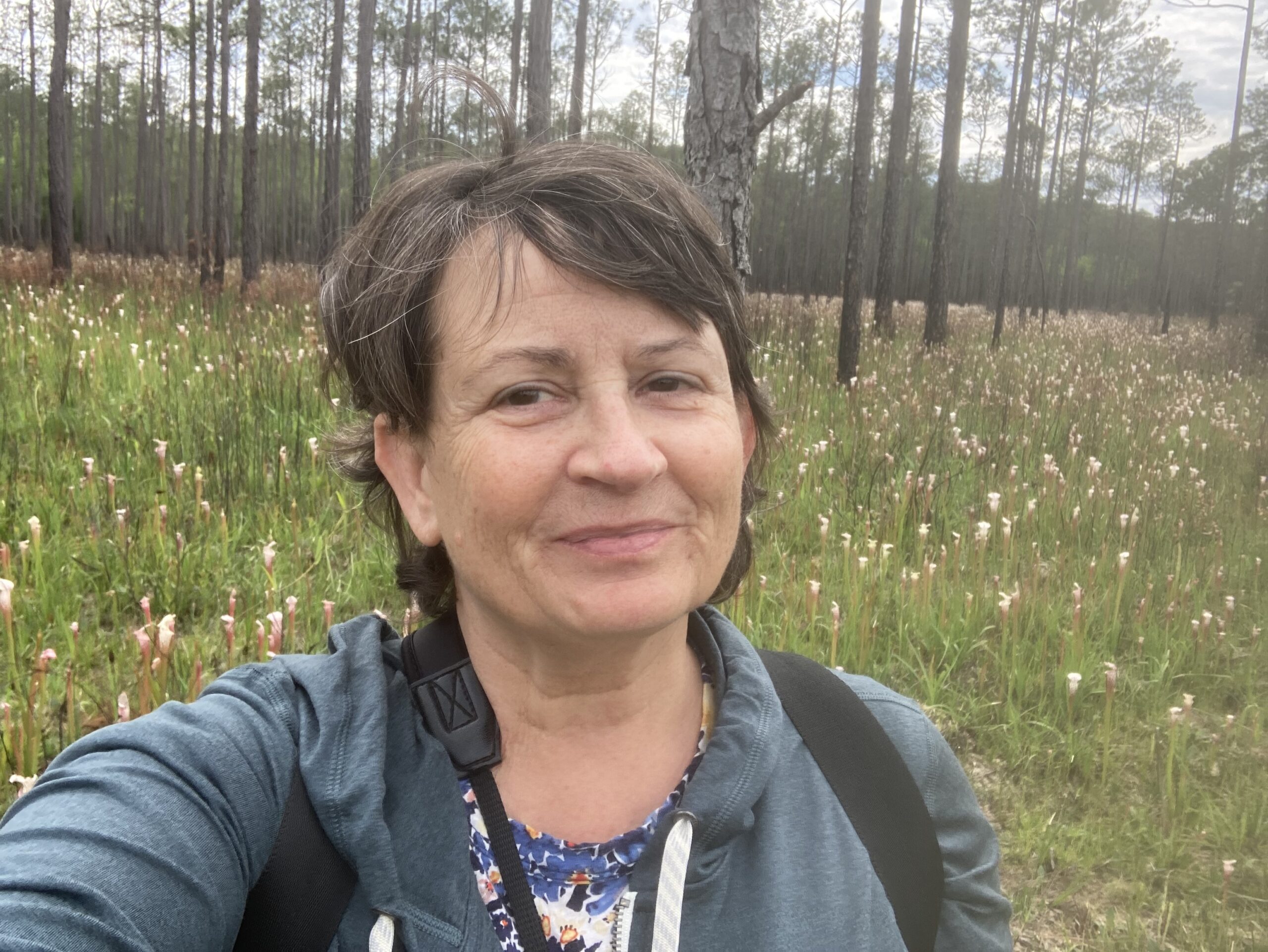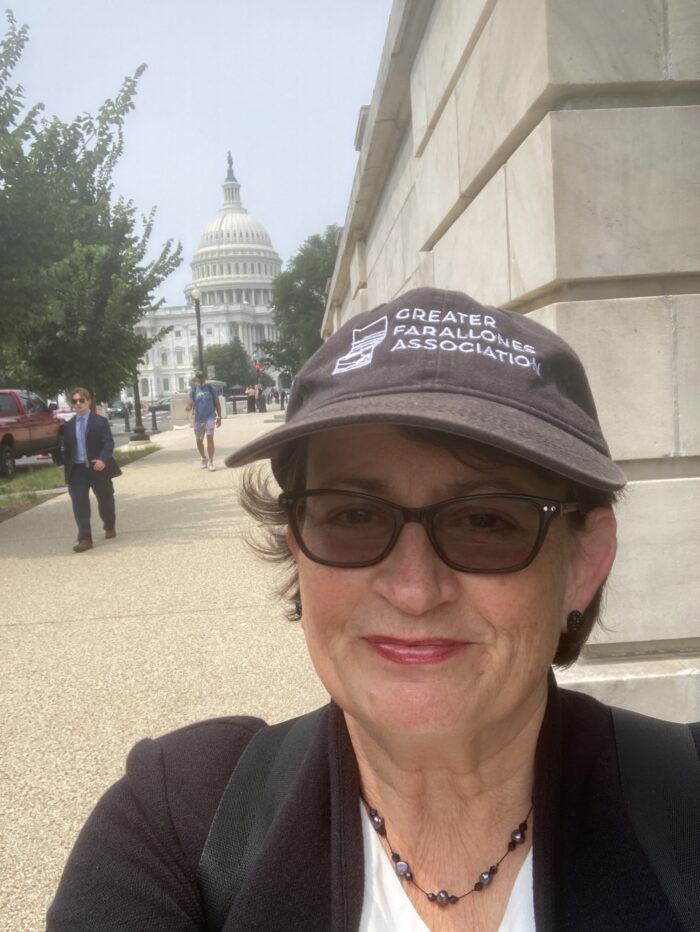
Pride In The Ocean: Deb Self

Photo credit: Deb Self
By Deb Self (she/her), Executive Director, Greater Farallones Association
Deb Self (she/her) joined Greater Farallones Association (GFA) as Executive Director in 2019, just before the pandemic, where she arrived with nearly 40 years of work in environmental nonprofits with a focus on public policy and administrative advocacy, and environmental racism. Her science background includes a BS in Geology and she holds a Masters in Sociology, with a focus in Political Economy of the Race and the Environment.
Hi folks. I’m honored to have been asked by the National Marine Sanctuary Foundation to contribute a blog for Lesbian, Gay, Bisexual, Transgender, Queer, Intersex, Asexual, Plus, Plus, (LGBTQIA++) Pride Month. First a little about me: I direct Greater Farallones Association, which partners with Greater Farallones and Cordell Bank National Marine Sanctuaries, off the North-central California coast. Together, these sanctuaries cover about 4,500 square miles of federally protected waters and coast – a critical stopover on the Pacific Flyway for migratory birds, and home to uniquely nutritious upwelling of cold deep currents that support a robust ecosystem with numerous marine mammals and fish and other aquatic and intertidal species. The backbone of the ecosystem, in many ways, is the kelp forest that was decimated in 2014 by the cascading effects of a marine “heat blob.” Studying and mitigating climate change impacts, including an increasing portfolio of restoration projects, are core tenets of GFA’s mission.
Also central is our joint work with NOAA’s Office of National Marine Sanctuaries (ONMS) supporting the next generation of ocean scientists, educators, policy makers, community activists, and NOAA employees! Central to that work is introducing a diverse and representative generation of San Francisco Bay Area youth to marine and climate science at an early age, even as we make room for lots of field trips for experiential learning, inspiration, joy and awe.
I come to this work with about 40 years of nonprofit experience and a focus on equity. I’m a 61 year old white, southern femme Queer. I’ve known I was queer since I was five. I go by she/her pronouns and have always been Femme, though I’ve never felt I was feminine like the straight women around me. I’ve also always been deeply committed to undoing white supremacy and patriarchy, and, as a professional, to building organizations that are inclusive, anti-racist, pro-Black, pro-queer, and focused on anti-colonial pedagogy.
For me, unpacking (as it were) white privilege is a life-long project that is central to making amends and reparations personally, and is also critical to drawing in diverse voices that inform and direct our nonprofit priorities. Let me be frank (that always makes me giggle): white privilege is foundational to how I understand our work and challenges; it limits my understanding of the complexity of experiences of people who identify as Black, Indigenous or People of Color (BIPOC) in accessing our coasts and public spaces, environmental careers, opportunities to lead nonprofit organizations, participate in management decisions, and define the very narratives of what our challenges and opportunities are. So, I’m happy to write this blog, but I also call on the National Marine Sanctuary Foundation to center the perspectives of BIPOC and queer staff and community leaders, as it helps to cultivate a more equitable and just sanctuary system.
Even as I focus on building an inclusive workplace, I’m also engaged in how to develop the best long-range program plans, particularly in relation to communities we serve, or in the parlance of ONMS, “the public.” Happily, we’re building new bridges all the time, with programming responsive to communities’ needs, such as NOAA’s Planktronica event in conjunction with Queer Surf.
To continue to find and address gaps in service, and opportunities to deepen non-transactional relationships, we all need to be more specific about special efforts to understand the needs of underserved and excluded communities. I’m especially focused on the question of who exactly the Sanctuaries’ public is, and who has been underengaged or historically excluded from narratives about our oceans, coasts, and environment.
I think this starts with geography and looking inland to communities and Indigenous tribes and communities that historically had access to coasts. Looking inland includes Black communities with deep economic and personal connections to our maritime industries and urban economies, but who have traditionally been excluded from access to public lands – either formally through Jim Crow and other segregation laws, or through threat of violence – and who through redlining have been excluded from home ownership in coastal areas or were forced to buy in neighborhoods disproportionately poisoned by toxics. Looking inland helps us include Latino and Immigrant communities that, especially with growing wealth disparity, have limited access to coastal areas. For many BIPOC and queer folk, including Greater Farallones Association and National Marine Sanctuary Foundation staff who teach and do science in the intertidal, the white, wealthy fringes of coastline still represent a place where a sense of belonging can be interrupted by the summon of a suspicious park ranger or vigilante member of the public questioning their credentials in traumatizing events.
If you have ideas and perspectives to help inform this strategic analysis of how to best include and serve the communities of our marine sanctuaries, I welcome the dialogue and as well as reading suggestions. Writings by bell hooks, Susan Griffin, and Mab Segrest, formed the bedrock of my understanding of the intersectionality of racism, sexism, homophobia, and classism. Today, I am reading Carolyn Finny’s Black Faces, White Spaces: Reimagining the Relationship of African Americans to the Great Outdoors. And as I ponder the rising threats to trans people and queers in the US, I turn always to Jamelle Bouie’s analysis of the 14th Amendment and Supreme Court trends, understanding that the fight to preserve our civil liberties has its roots (and branches) in the high court’s interpretation of states’ rights to interfere with our safety and liberty.
Finally in this Pride Month and the month of Juneteenth (which celebrates the anniversary of the liberation of a quarter million enslaved people long after the official Emancipation Proclamation), I raise my glass and Progress Pride flag to the liberty of enslaved and trafficked people everywhere as we center justice in our work of conserving marine sanctuaries. I also welcome and celebrate the appointment of Joel Johnson as the National Marine Sanctuary Foundation’s new President and CEO and look forward to deepening our organizational partnership.

Photo credit: Deb Self
